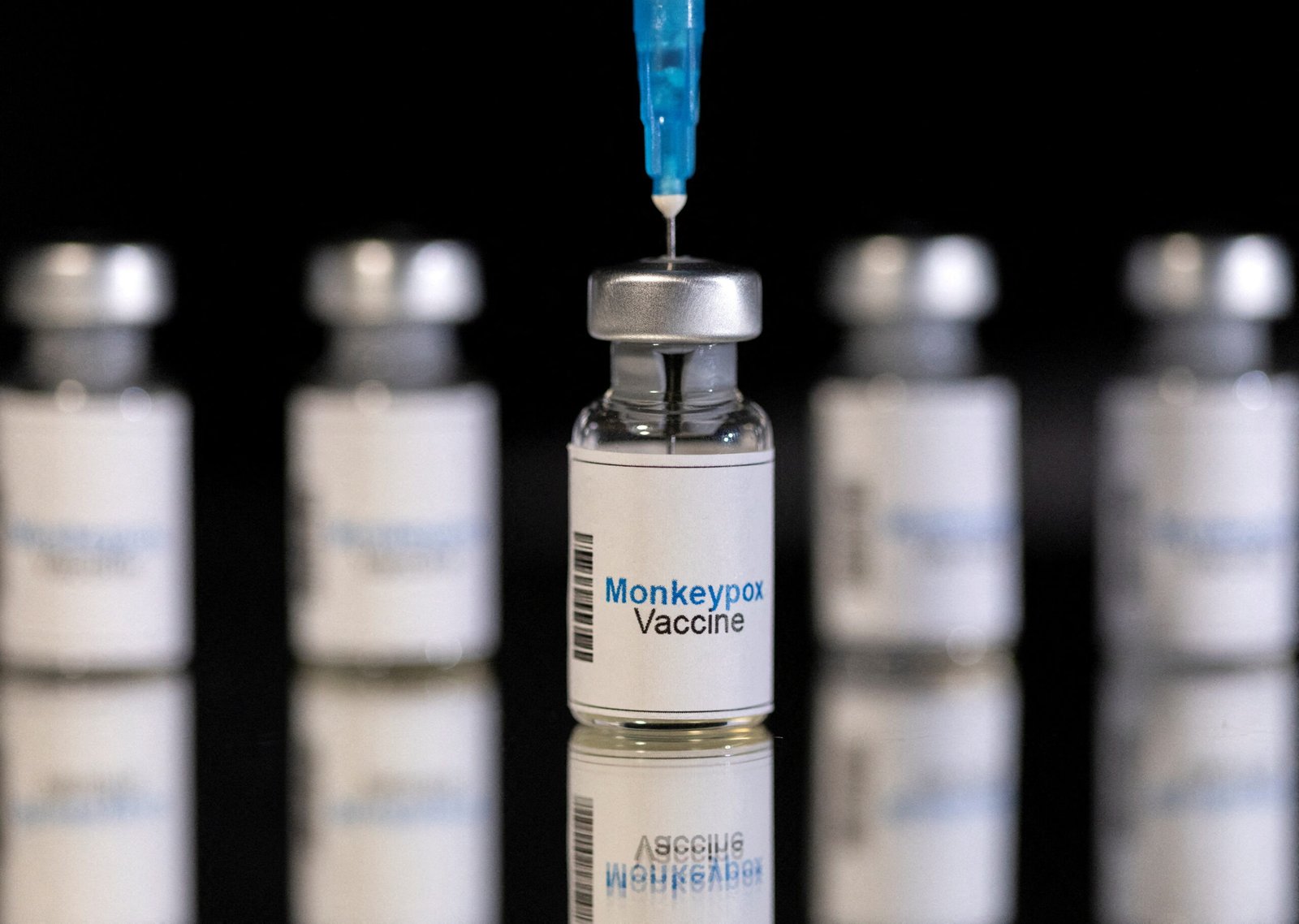Monkeypox Unveiled: Understanding the Outbreak, Symptoms, and Prevention Strategies

In recent years, the world has faced numerous health crises that have heightened our awareness of infectious diseases. Among them is monkeypox, a viral disease that has gained attention due to its spread beyond its usual geographic boundaries. This blog dives into the details of monkeypox, exploring its origins, symptoms, transmission, treatment, and preventive measures. By this end, you’ll have a comprehensive understanding of monkeypox and how to protect yourself and your community from this emerging health threat.
What is Monkeypox?

Monkeypox is a rare viral disease that is similar to smallpox, though generally less severe. It is caused by the monkeypox virus, which belongs to the Orthopoxvirus genus in the Poxviridae family. The disease was first identified in laboratory monkeys in 1958, hence the name “monkeypox,” although it is more commonly found in rodents and other wild animals. The first human case of monkeypox was recorded in 1970 in the Democratic Republic of Congo.
Origins and Spread of Monkeypox

Historically, monkeypox has been confined to the rainforests of Central and West Africa, where the virus circulates among wild animals, particularly rodents. Human cases were typically sporadic, occurring in people who had close contact with infected animals. However, in recent years, there has been a noticeable increase in cases reported outside of Africa, raising concerns about the potential for wider outbreaks.
The spread of monkeypox outside of Africa can be attributed to several factors:
- Globalization and Travel: Increased international travel has facilitated the spread of infectious diseases, including monkeypox, as infected individuals can carry the virus to different parts of the world.
- Deforestation and Urbanization: The destruction of natural habitats has brought humans into closer contact with wildlife, increasing the risk of zoonotic diseases like monkeypox.
- Climate Change: Changes in climate patterns can alter the distribution of wildlife species that carry the monkeypox virus, potentially expanding its range.
How is Monkeypox Transmitted?

Monkeypox is a zoonotic disease, meaning it is transmitted from animals to humans. The primary mode of transmission is through direct contact with the blood, bodily fluids, or skin lesions of infected animals. This can occur through bites, scratches, or handling infected animals, particularly rodents.
Human-to-human transmission can also occur, though it is less common. It typically happens through:
- Direct Contact: Touching the skin lesions or bodily fluids of an infected person.
- Respiratory Droplets: Inhaling large respiratory droplets from an infected person, usually during prolonged face-to-face contact.
- Contaminated Objects: Handling items that have been contaminated with the virus, such as bedding or clothing.
Symptoms of Monkeypox

The symptoms of monkeypox are similar to, but milder than, those of smallpox. The incubation period (the time from exposure to onset of symptoms) is usually 6 to 13 days but can range from 5 to 21 days. The disease typically progresses through two phases:
1. Invasion Period
- Fever: The onset of fever is usually sudden and can be accompanied by chills.
- Headache: Intense headaches are a common symptom during this phase.
- Muscle Aches (Myalgia): Patients often experience muscle aches and back pain.
- Fatigue: A general sense of fatigue and weakness.
- Swollen Lymph Nodes (Lymphadenopathy): Unlike smallpox, monkeypox is characterized by swollen lymph nodes, which can be a key distinguishing factor.
2. Skin Eruption Period
- Rash: The rash typically appears 1 to 3 days after the onset of fever. It begins as flat, red spots (macules) that evolve into raised bumps (papules), then fluid-filled blisters (vesicles), and finally, pustules that crust over and scab. The rash usually starts on the face and spreads to other parts of the body, including the palms and soles.
- Lesions: The lesions can be painful and itchy. In severe cases, they may become large and confluent.
The illness usually lasts 2 to 4 weeks, with most patients recovering without complications. However, in some cases, particularly in individuals with weakened immune systems, the disease can be severe or even fatal.
Diagnosis and Treatment
Diagnosing monkeypox can be challenging, as its symptoms overlap with those of other diseases, such as smallpox, chickenpox, and measles. Laboratory tests, including polymerase chain reaction (PCR) and viral culture, are used to confirm the diagnosis.
There is no specific treatment for monkeypox. Care is primarily supportive, focusing on relieving symptoms and preventing complications. This includes:
- Pain Management: Analgesics to relieve pain.
- Hydration: Ensuring adequate fluid intake to prevent dehydration.
- Antibiotics: To treat secondary bacterial infections if they occur.
Vaccination and Prevention

Vaccination plays a crucial role in preventing monkeypox. The smallpox vaccine has been shown to provide cross-protection against monkeypox, with studies suggesting that it is about 85% effective in preventing the disease. However, routine smallpox vaccination was discontinued after the eradication of smallpox in 1980, leaving a large portion of the population vulnerable to monkeypox.
In response to recent outbreaks, there has been renewed interest in the development and deployment of vaccines specifically for monkeypox. The newer generation of smallpox vaccines, such as the Modified Vaccinia Ankara (MVA) vaccine, has been approved for use against monkeypox and is being made available in outbreak settings.
Preventive Measures
Preventing the spread of monkeypox requires a combination of public health measures, including:
- Avoiding Contact with Wild Animals: Limiting exposure to potentially infected animals, particularly in regions where monkeypox is endemic.
- Safe Handling of Infected Materials: Properly disposing of or disinfecting items contaminated with the virus, such as bedding, clothing, and medical equipment.
- Isolation of Infected Individuals: Quarantining individuals with confirmed or suspected monkeypox to prevent transmission to others.
- Vaccination: Offering vaccination to at-risk populations, such as healthcare workers and individuals in contact with infected animals or people.
Global Health Implications
The emergence and spread of monkeypox have significant implications for global health. As the disease moves beyond its traditional geographic boundaries, it highlights the need for robust surveillance systems to detect and respond to outbreaks quickly. International collaboration is essential to sharing information, resources, and strategies to control the spread of the virus.
The recent monkeypox outbreaks also underscore the importance of addressing the root causes of zoonotic diseases, such as deforestation, wildlife trafficking, and climate change. By protecting natural habitats and regulating the trade of wild animals, we can reduce the risk of new diseases spilling over into human populations.
Addressing Stigma and Misinformation
As with many infectious diseases, monkeypox has been accompanied by stigma and misinformation. It’s important to combat these issues by providing accurate information about the disease and its transmission. Stigmatizing affected individuals or communities can hinder public health efforts by discouraging people from seeking medical care or reporting symptoms.
Future Directions and Research

Ongoing research is critical to understanding monkeypox better and developing more effective prevention and treatment strategies. Key areas of research include:
- Vaccine Development: Improving existing vaccines and creating new ones that offer broader protection against monkeypox and related viruses.
- Antiviral Therapies: Investigating antiviral drugs that could be effective in treating monkeypox.
- Transmission Dynamics: Studying how the virus spreads in different populations and settings to inform public health interventions.
- Long-Term Immunity: Understanding the duration and effectiveness of immunity following infection or vaccination.
Monkeypox is an emerging global health concern that requires a coordinated response to prevent its spread and minimize its impact. By understanding the origins, symptoms, transmission, and prevention strategies associated with monkeypox, individuals and communities can take proactive steps to protect themselves. Public health authorities must continue to monitor the situation, provide accurate information, and promote vaccination and other preventive measures. With vigilance and collaboration, we can mitigate the threat of monkeypox and safeguard public health.
